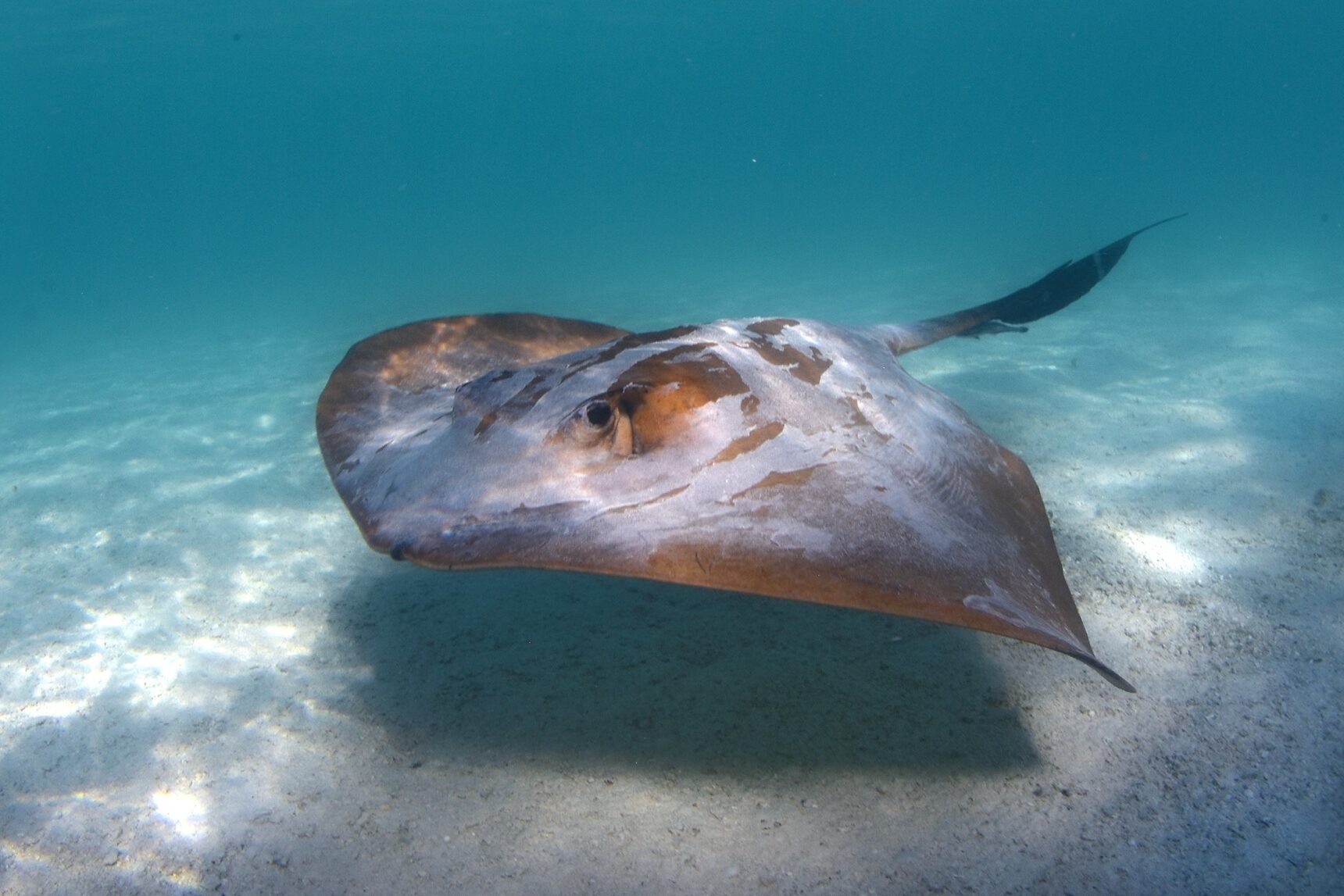World first: evidence of stingrays making sounds

Sharks, rays, and skates, which are part of the cartilaginous fishes, were to date thought to be mute, and lacking the ability to communicate with sounds.
However, researchers from Australia, Sweden and Spain have shown that at least two species of stingray produce sounds voluntarily, likely as a defence or warning response.
“We know that over 990 species of bony fish make sounds,” says lead author Dr Lachlan Fetterplace, a researcher at the Swedish University of Agricultural Sciences Department of Aquatic Resources. “[But] cartilaginous fishes, including sharks, skates and rays, have generally been thought of as silent.
In the study, multiple records from Australia and Indonesia of voluntary sound production by two species of stingray – the mangrove whipray (Urogymnus granulatus) and the cowtail stingray (Pastinachus ater) – are presented.
Both species produce a series of very short and loud clicks, which are thought to be used to warn off predators. Clicking sounds were made in response to an observer approaching closely, and stopped when the observer or ray had moved away.

“How these rays produce their sounds remains unclear,” says co-author Dr Joni Pini-Fitzsimmons, postdoctoral research fellow at Macquarie University, “but it appears to involve rapid movement of the head or jaw and spiracles, an opening behind the eyes used for respiration.”
“Now that active sound production has been identified in two species of rays, we are hoping that people will share recordings of other species” says Dr Barbara Wueringer, Principal Scientist and Director at Sharks And Rays Australia. “Sound production may be more common in stingrays than we think.”
The authors encourage citizen scientists and other researchers with further examples to make contact. After all, it is likely that many more of the 1200 species of sharks and rays produce sounds.
“That we only just realised that these commonly encountered stingrays are making sounds demonstrates, once again, how little we know about the oceans,” said co-author Johnny Gaskell, who filmed cowtail rays making clicking sounds off Heron Island.




